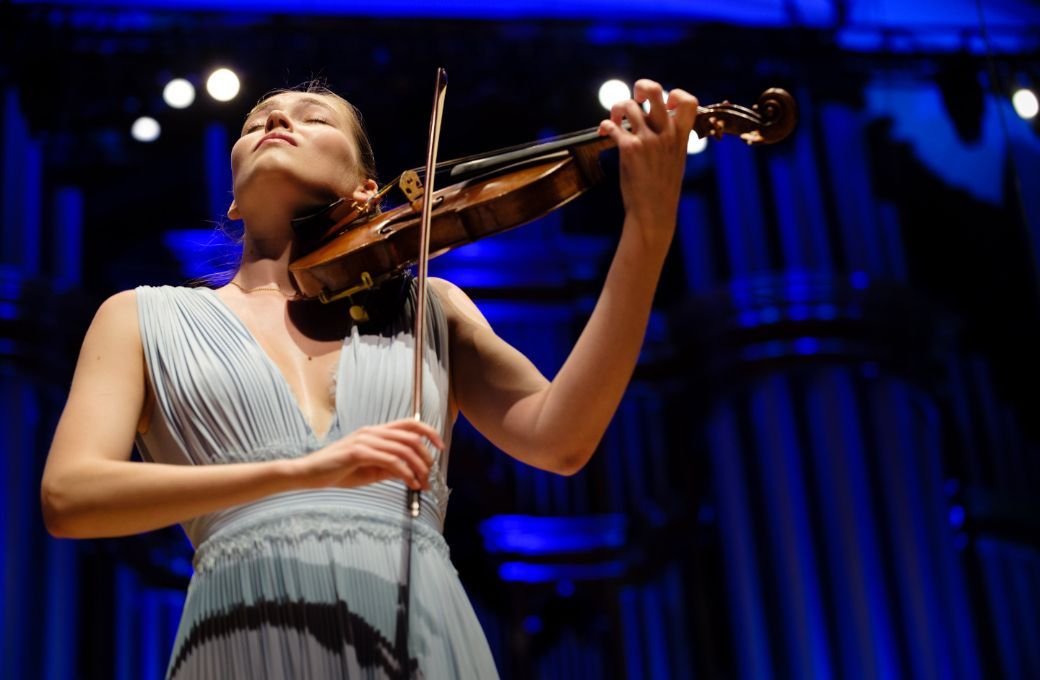For their “New Worlds” concert, the Auckland Philharmonia focused on three composers with undoubted connections to the New World: Korngold, who emigrated to the United States from his native Austria in the 1930s; the great American composer Barber; and Dvořák, who wrote and premiered his Ninth Symphony in the United States. The opener was not a product of Korngold’s American period, but rather the Schauspiel-Ouvertüre (Overture to a Drama), written when he was a precocious 14-year old. Subtlety was clearly not the young Korngold's forte; after a quietly sinister opening it is a rather bombastic piece but shows a masterful command of orchestral colour, already reminiscent of his later swashbuckling film scores. With Giordano Bellincampi at the helm, there was something irresistible about the swinging bravado of the performance and the opulence of the APO's sound.

Despite the misgivings of Samuel Simeon Fels, the original commissioner of the work, whose ward Iso Briselli evidently found it not sufficiently violinistic, Barber’s Violin Concerto has become one of the mainstays of the 20th-century violin repertoire. Overall, New Zealand-born violinist Geneva Lewis was at ease in the music’s soaring cantilena throughout the first two movements, quite ravishing if sometimes a little small-scaled in tone. Unusually, this concerto is opened by the soloist and Lewis made a strong first impression, sweetly shaping the lyrical first theme.
The Andante second movement opened with absolutely stunning work from the orchestra’s solo oboe, tone filled with emotion, creating a magic in phrasing that even the soloist herself was unable to quite match, beautifully though she played. This was the one limitation in the performance; while technically adept and sweet of tone, Lewis never quite felt that she plumbed the depths of the music, with some phrases coming off more efficient than memorable. In both movements, Bellincampi created a wonderful mood of introspection in the orchestra, responding flexibly to the music’s ebbs and flows. The third movement is a complete mood-change – a Presto calling for rapid passagework with barely any let-up for its entire length – and here Lewis’ playing was jaw-dropping in its effortless facility. The orchestra was a worthy partner, with some especially precise work from the brass section.
There are few symphonies as well-known and oft-played as Dvořák’s Ninth, thanks to its seemingly endless sequence of memorable melodies. Thankfully, there was nothing rote about this performance, as Bellincampi and the APO took to the extrovert first movement with gusto. Some pizzicato detail was lost under the surging orchestra, but overall the sounds the orchestra made was stunning, horns and trumpets in particularly seamless and ringing form, and lower brass detail coming out clearly. One must recognise the sterling solo work of the cor anglais player in shaping most poetically the famous opening theme of the slow movement. When the melody returned in the solo strings, it was again absolutely gorgeously rendered.
Bellincampi provided a fiery Scherzo, with unflagging energy and plenty of charm in the Trio. Even better was the finale, taken at quite a terse and powerful clip, the opening figures bringing a sudden thrilling intensity to the hall. The brass was in electrifying form as it launched the main theme, and the strings danced in perfectly coordinated rubato. In contrast, Bellincampi also made plenty of space for the sweet clarinet solo to make its mark. Only the final peroration disappointed; it felt as though much of the momentum had been lost in the prior decrescendo. Nevertheless, it was still an exciting performance. Bellincampi continues to bring out the best from the Auckland Philharmonia in this kind of music.


